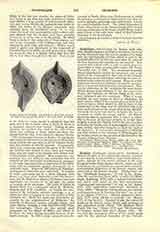

Catafalque, derived from the Italian word catafalco, literally means a scaffold or elevation, but in its strictly liturgical sense the word is employed to designate the cenotaph-like erection which is used at the exequial offices of the Church, and takes the place of the bier whenever the remains are not present. It is covered with a black cloth or pall, on which there is a cross either of white or some other color (De Herdt, Praxis Sac. Lit., II, 328). The catafalque is usually placed immediately outside the sanctuary, and is the center of the ceremonies of that part of the exequial office known as the absolution, receiving the same attention as the corpse would if present. Hence it is that lights burn around the catafalque during the function, and it is aspersed with holy water and incensed. During the absolution at the catafalque the cross-bearer should always stand between it and the door of the church, the celebrant or officiant being at the other end, between it and the sanctuary. When it is not possible for any reason to have a catafalque, its place may be supplied by a square piece of black cloth (pannus niger), which should be laid in front of the lowest step of the altar, and be sprinkled with holy water and incensed at the proper time by the officiant. Formerly the word was used to designate the bier or structure on which the corpse rested. No flowers should be used in connection with it, but it is allowable in the case of deceased prelates to mount their insignia to show the dignity, and in the case of nobles to display the family coat of arms, together with coronets, orders, and other insignia, to show the rank of the deceased. A very notable monument of this kind was that erected to the memory of Michelangelo by his brother artists on the occasion of his funeral in the Church of Santa Croce, Florence.
PATRICK MORRISROE

